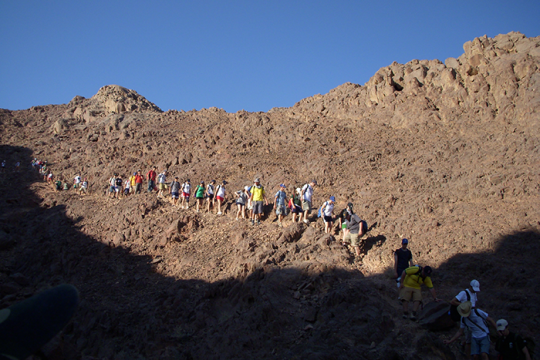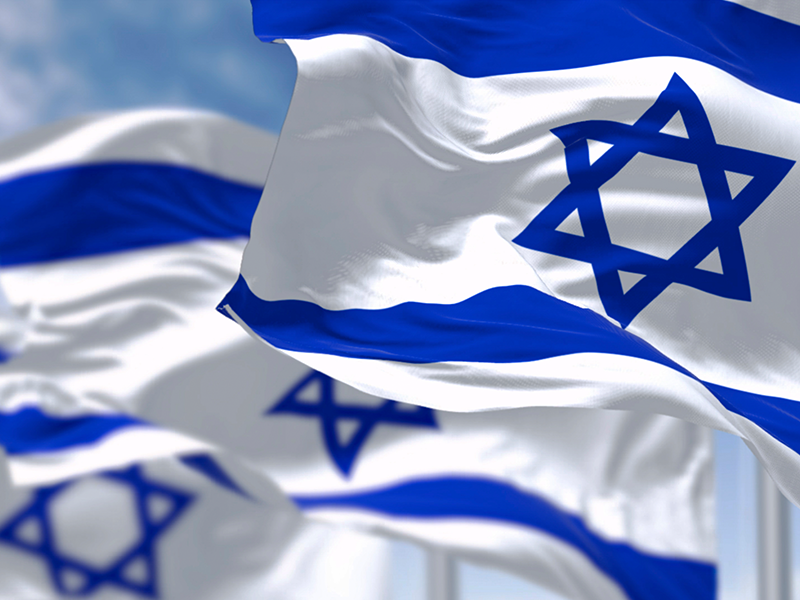Kol Nidrei: Soulful Melody, Controversial Text
If one were to ask Reform congregants what single piece of liturgy epitomizes Yom Kippur for them, the answer surely would be Kol Nidrei. Its haunting melody, traditionally chanted three times before the open ark with all of the Torah-scrolls being held in front of the congregation, ushers in the most solemn day of the Jewish year. Indeed, this prelude to the Yom Kippur evening service is so impressive that the service itself has become popularly known as “Kol Nidrei” or “Erev Kol Nidrei.” Yet the text has been a subject of ongoing controversy since its first appearance in a rabbinic liturgical compendium in the ninth century C.E.
Kol Nidrei , in fact, is not a prayer at all, but a legal formula for the annulment of vows (solemn, binding promises made before God; cf. Numbers 30:3, Deuteronomy 23:24). That is why its recitation traditionally must precede the setting of the sun and the beginning of the evening service proper: no legal transactions may take place on the holy day. As a legal formula, it is recited three times in order to mark its efficacy (much in the style of magical formulas). Its broader cultural rationale goes back to the talmudic era, when the Rabbis (somewhat grudgingly1) needed to provide a way to release their passionate fellow-Jews from vows that had been rashly made. (An entire tractate of the Mishnah and the Talmuds – Nedarim, “Vows” – deals with this subject.)
Nonetheless, Kol Nidrei is absent from talmudic literature. It is first mentioned as a popular but unauthorized custom in Seder Rav Amram , the first compendium of Jewish liturgical laws, customs, and texts in the late ninth century C.E. The text reads:
Some congregations do this: When the prayer-leader gets up, he begins as follows:
All vows, prohibitive vows, bans, oaths, and pledges that we have vowed, sworn, and taken upon ourselves under oath from the past Day of Atonement to this upcoming Day of Atonement–we retract all of them in the presence of our Father in heaven: The vows we made are not to be deemed vows. The prohibitive vows we made are not to be deemed prohibitive vows. The bans we made are not to be deemed bans. Tbe oaths we swore are not to be deemed oaths. The pledges we took are not to be deemed pledges. The vows are totally voided. The prohibitive vows are totally voided. The bans are totally voided. The oaths are totally voided. The pledges are totally voided. Here is no vow, no prohibitive vow, no ban, no oath, no pledge. [Instead,] here is remission, pardon, and atonement, as Scripture says, The whole Israelite community and the stranger residing among them shall be forgiven, for the entire people acted in error (Numbers 15:26).
. . .But the Holy Academy [yeshivah] sent word that this is a foolish custom [minhag shtut] and that it is forbidden to do this.
Clearly, the point of this custom was to enter the new year, or the Day of Atonement, cleared of the burden of unfulfilled (and perhaps unfulfillable) obligations for which God enforces the sanctions. Equally clearly, this was not a custom sanctioned by the rabbinic authorities in the Babylonian academies. It appears rather to have been a popular custom that originated either in Babylonia or the land of Israel. Some later ge’onim (Hai ben Sherira, Paltoi) apparently approved the custom.2
With or without geonic sanction, the custom prevailed and was simply taken for granted in the medieval rites – though not without generating further legal controversy. Note that the early text of Kol Nidrei deals with the annulment of vows made “from the past Day of Atonement to this upcoming Day of Atonement,” that is to say, vows made over the past year. From a legal perspective, a number of the Ashkenazic Tosafists, the students and descendents of Rashi working in the twelfth century, found this to be highly problematic. Jacob ben Meir (Rashi’s grandson, called Rabbeinu Tam, in Troyes) insisted that, for technical legal reasons, the recitation of Kol Nidrei had no effect on vows previously made, but could certainly prospectively invalidate vows that would be made in the future. Stuart Weinberg Gershon rightly calls additional attention to the social and cultural context in which Rabbeinu Tam’s ruling was made: some Jews apparently used Kol Nidrei as an excuse to avoid their legal obligations, including those outside the Jewish community.3The notorious Christian-imposed more judaico, or “Jew’s Oath,” which often sought to humiliate Jews, was fueled by Christian suspicions about Jewish legal reliability that derived in part from their jaundiced view of the Kol Nidrei formula.
In the thirteenth century, Rabbi Meir ben Baruch of Rothenburg (in Franconia) fitted out theKol Nidrei recitation with a fuller ritual framework: a preamble that invokes the authority of both the heavenly and earthly courts, as well as the consent of God and of the congregation, to pray with those who have transgressed and to justify the release of the congregation from its vows.4
The plaintive Kol Nidrei chant known in Ashkenazic (but not other) communities, which for many people epitomizes the expressive content of the prayers on Yom Kippur, includes various musical motifs that are known as manginot mi-Sinai, “tunes from Sinai,” – a rhetorical way of indicating that they are quite old. Despite the lack of musical notation for traditional Jewish chants before the eighteenth century, we can date the mi-Sinai tunes back with certainty to the sixteenth century (and perhaps to the fourteenth).5 As we shall see, it was the Kol Nidrei chant that ultimately led to the reinstatement of this text when it became controversial again at the beginning of the modern era.
The onset of modernity saw Jews struggling to attain full citizenship rights particularly in the German states, where the more judaico was often still in force (in Prussia, it remained on the books until 1869!). German Jewish historical and political sensitivities on this matter, together with the fact that Kol Nidrei is not a prayer but a legal formula deemed to be of questionable value, led to its suppression from most Reform prayer books from the very outset.6 The topic of Kol Nidrei was raised – in the context of persuading the various German governments to abolish the more judaico – at the very first conference of reform-minded rabbis in Braunschweig in 1844. The transcript of that meeting includes the following interchange:
. . .The question is now asked:
- Should the Conference declare that the oath of a Jew, invoking the Name of God, is binding without further ceremony?
Unanimous response: Yes! - Does the Conference declare that Kol Nidrei is unessential? And will the members of the Conference, in their spheres of jurisdiction, work for its abolition, already in time for next Yom Kippur?
Yes.7
But attachment to the soulful melody of Kol Nidrei led to various proposals for retaining the melody while jettisoning (or, later, revising) the text. Typical is this very early (1840) testimony from Leopold Stein, then rabbi in Burgkundstadt (Upper Franconia):
This is not the place in which to deal with the value of the original Kol Nidreiformula, and to justify those – including the author – who have ordered its removal. This much, though, is certain and cannot be denied by anyone: that the formula is by no means suited to introduce the holiest of all days, and that it would have been more suitable for any occasion but that of the eve of the exalted Day of Atonement. It almost seems that there has been an awareness of this incongruity. That is why, partly consciously, and partly unconsciously, a tune has been fitted to this uninspiring text – a tune which indeed did not fit the text, but which, to a high degree, was in consonance with the solemnity of the day it is meant to introduce. Whoever has once visited a synagogue on Atonement Eve will remember the deep devotion and the sincerity with which all those assembled listened to the first song of that evening. This most certainly cannot be ascribed to the uninspiring text, but solely and alone to the warm and pious spirit which breathes and lives in the tune. To forego this noble tune, which has so very much endeared itself to our coreligionists – that made me feel uncomfortable about the abolition of the above-mentioned formula. The holy day would be lacking its long accustomed solemn introduction. I found no rest until I had satisfied my feeling in this respect. I therefore requested my cantor . . .to provide me with the simple musical setting of the Kol Nidrei. This he soon produced, omitting all of the traditional embellishments. I then sought to feel myself into the tune, and to clothe in words the pious feeling of the original composer. In the musical setting before me I found the expression of a threefold feeling: at first, an anxiety at the approach of the solemn day; then a daring rising towards the Divine Pardoner; and finally, a sincere plea before the throne of the All-Merciful One. The words came into my mouth of their own accord. . . .Through its use in my synagogues, the whole has produced a deep impression and a most ardent feeling, which, I trust, will yet be heightened when the text is in the hands of all the worshippers who will, from year to year, make it more and more their very own. For we now have ‘eit lifrots v’eit livnot [Ecclesiastes 3:3], a time not only for tearing down, but also for building up. The modern and newly introduced institutions, animated by the spirit of our religion, will, with the help of God, one day become the dear and cherished possession of our grandchildren and great-grandchildren; and pious custom will not withhold its sanctifying power in days to come, even as in the days of old. [emphases added]8
The German hymn-text that Stein wrote to the Kol Nidrei melody, O Tag des Herrn! (O Day of God!), appeared in many subsequent Reform prayer books (including the first two editions of the Union Prayer Book) as a substitute for the Kol Nidrei text.9 Other substitutes included alternative Hebrew texts (as in Abraham Geiger’s prayer books) or a translation of Psalm 130 (“Out of the depths have I called out to You”) set to the traditional melody.
North American Reform prayer books followed the German precedents in this regard. Kol Nidrei is omitted from all of them untilGates of Repentance (1978). I.M. Wise’s Minhag America vol. 2 (1866) includes Stein’s “O Tag des Herrn!” in both German and English.UPB II (1894), as well as its 1922 revision, includes an English version of the Stein hymn, as well as Psalm 130. In the late 1920’s, as the Union Hymnal was being revised a second time, the CCAR had discussed producing a revised Hebrew text of Kol Nidrei to accompany its musical notation in the revised hymnal, but could not agree on a version. Consequently, the Kol Nidrei melody is notated in the 1932 Union Hymnal with no words underscoring it (!). Controversies continued through the production of the 1945 newly revised UPB II. The first printing of this volume included the full Aramaic text of Kol Nidreitogether with an English paraphrase – but the CCAR Liturgy Committee afterwards maintained that it had not authorized that inclusion, and the text was removed in subsequent printings (the two-page spread that had originally included the text was reformatted with more spacing between the lines).
The willingness to reconsider the inclusion of Kol Nidrei in the North American Reform liturgy, beginning in the late 1930’s and gaining steady momentum thereafter, was a reflection of the entry into the mainstream of the Reform movement and its leadership of Jews of eastern European origin, who often had a more visceral connection to Jewish religious and cultural traditions. The incorporation of more Hebrew text and more traditional ritual into Reform liturgy, becoming more dramatic in the late 1960’s and 1970’s is reflected in the treatment of the Kol Nidrei inGates of Repentance (1978), where the full text is given, but framed by a contemporary meditation and an English paraphrase. The current draft of Mishkan HaNefesh, the new Reform Mahzor, precedes the full traditional text of Kol Nidrei with a selection of framing meditations and study texts, but this time presents as well a faithful translation of the Aramaic.
Irrespective of any halachic considerations, Kol Nidrei remains a powerful prelude to Yom Kippur, on account of both its expressive melody and its affective symbolism: we strive to enter the new year forgiven of our past failures of omission as well as of commission, in the assurance that reconciliation and forgiveness are possible when preceded by trueteshuvah – both turning and returning.
- So, for example, “Rabbi Meir says, It is better that you should not vow than that you should vow and not pay (Ecclesiastes 5:4)-Better than both is that you should not vow at all” (Tosefta Hullin 2:17; b. Nedarim 9a; b. Hullin 2a).
- For further discussion of these issues, see Lawrence A. Hoffman, The Canonization of the Synagogue Service (Notre Dame: University of Notre Dame Press, 1979), 100-102; and Stuart Weinberg Gershon, Kol Nidrei: Its Origin, Development, and Significance (Northvale, NJ: Jason Aronson Inc, 1994), 61-74.
- Gershon, Kol Nidrei, 81-82.
- Gershon, Kol Nidrei, 83.
- See further the remarks of Mark Kligman, in Lawrence A. Hoffman, ed., All These Vows: Kol Nidre (Woodstock, VT: Jewish Lights Publishing, 2011), 67-70.
- The European Reform treatments are dealt with extensively by Jakob J. Petuchowski, Prayerbook Reform in Europe: The Liturgy of European Liberal and Reform Judaism (New York: World Union for Progressive Judaism, 1968), 334-347, and Annette M. Boeckler, in Hoffman, ed., All These Vows, 39-60.
- Cited in Petuchowski, Prayerbook Reform in Europe, 336.
- Cited in Petuchowski, Prayerbook Reform in Europe, 339-340.
- For more on Stein and this setting, see Eric L. Friedland, “Leopold Stein: A Master of Liberal Prayer,” in David J. Goldberg and Edward Kessler, eds., Aspects of Liberal Judaism: Essays in Honour of John D. Rayner (London: Valentine Mitchell, 2004), 49-72.
Dr. Sarason is Professor of Rabbinic Literature and Thought and the Associate Editor of the Hebrew Union College Annual. He was ordained at HUC-JIR.



